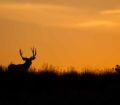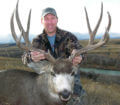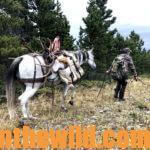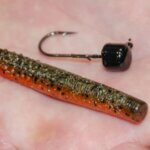 Editor’s Note: Mark Drury of Drury Outdoors (https://www.druryoutdoors.com/) is known first and foremost as an expert white-tailed deer hunter and turkey hunter. You can forecast deer movement with his app at (https://www.druryoutdoors.com/deercast.php#.W9H2GeJOmUk) that combines local weather info with the distinct characteristics of each of the 13 phases of whitetail season to deliver a custom forecast for peak deer activity of where you should hunt down to the hour. This app combines 70 years of Mark and Terry Drury’s whitetail-hunting expertise with hour-by-hour real-time algorithm-driven deer movement forecasts and an abundance of videoed Mossy Oak hunts. But what you may not know is that Mark also enjoys hunting mule deer and uses what he learns during mule deer hunting in September and October every year to prepare for whitetail season.
Editor’s Note: Mark Drury of Drury Outdoors (https://www.druryoutdoors.com/) is known first and foremost as an expert white-tailed deer hunter and turkey hunter. You can forecast deer movement with his app at (https://www.druryoutdoors.com/deercast.php#.W9H2GeJOmUk) that combines local weather info with the distinct characteristics of each of the 13 phases of whitetail season to deliver a custom forecast for peak deer activity of where you should hunt down to the hour. This app combines 70 years of Mark and Terry Drury’s whitetail-hunting expertise with hour-by-hour real-time algorithm-driven deer movement forecasts and an abundance of videoed Mossy Oak hunts. But what you may not know is that Mark also enjoys hunting mule deer and uses what he learns during mule deer hunting in September and October every year to prepare for whitetail season.
I’m often asked what I like best about mule-deer hunting. I guess I love to mule-deer hunt because I can start hunting mule deer in Canada in September or October. The seasons for mule deer hunting are open before whitetail seasons open. For me, mule-deer hunting is much like turkey hunting, since you’re constantly moving, trying to find a mule-deer buck you want to take. Then after you spot him, you have to work with the terrain and the wind to try to get into position to take that buck. Even when you think you’ve got that all worked out, often mule deer won’t do what they’re supposed to do.
For me, mule-deer hunting is like a chess match. When I’m hunting whitetails, I get in my tree stand after I’ve been scouting and learning all I can about the deer I 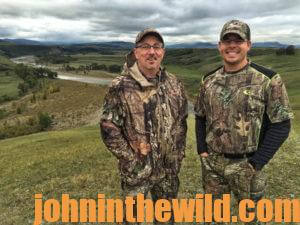 want to take and then wait on the whitetails to come to me. But when I’m hunting mule deer, I’m taking the hunt to the muleys. I enjoy that aspect of being able to make something happen. To be completely honest, I mess up at times. Mule deer can be really tough to spot and stalk with a bow. I have a lot more failures than I do successes when hunting mule deer. I think at the end of the day failure is what makes all of us better hunters and better people. We usually learn more from the failed hunts we go on than the successful hunts we take. In life, we often learn much more when we fail, than we do when we succeed.
want to take and then wait on the whitetails to come to me. But when I’m hunting mule deer, I’m taking the hunt to the muleys. I enjoy that aspect of being able to make something happen. To be completely honest, I mess up at times. Mule deer can be really tough to spot and stalk with a bow. I have a lot more failures than I do successes when hunting mule deer. I think at the end of the day failure is what makes all of us better hunters and better people. We usually learn more from the failed hunts we go on than the successful hunts we take. In life, we often learn much more when we fail, than we do when we succeed.
I always travel to Canada during the first week of September when the mule deer season generally starts. The country and the terrain are so beautiful there in Canada. I’ve also become very-good friends with my guide there, Cory Jarvis of Alberta (www.3riversadventures.com) and (www.facebook.com/3riversadventures/). I’ve hunted with Cory for 15 years. I like the terrain, enjoy Cory’s friendship and like to test all my hunting and shooting skills well before whitetail season starts in the Lower 48 States.
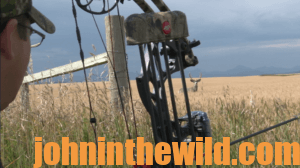 Alberta’s weather is unpredictable. I’ve seen temperatures in the 90s and also the 60s at that time of year. Although most of us think of Canada as being cold, I’ve found it to be much hotter in September there than I’ve ever will have believed if I hadn’t hunted up there in that early season. So, something you may not think about if you decide to go to Canada in September to hunt muleys is that you’ll need to
Alberta’s weather is unpredictable. I’ve seen temperatures in the 90s and also the 60s at that time of year. Although most of us think of Canada as being cold, I’ve found it to be much hotter in September there than I’ve ever will have believed if I hadn’t hunted up there in that early season. So, something you may not think about if you decide to go to Canada in September to hunt muleys is that you’ll need to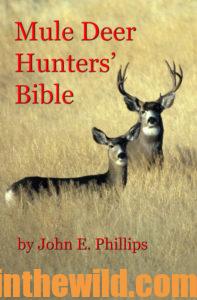 bring plenty of sunscreen. If you find a big mule deer, and he’s bedded-up, you may spend the hottest part of the day sitting in the blistering sun. The worse sunburns I’ve ever had in my life have come while mule deer hunting.
bring plenty of sunscreen. If you find a big mule deer, and he’s bedded-up, you may spend the hottest part of the day sitting in the blistering sun. The worse sunburns I’ve ever had in my life have come while mule deer hunting.
Another question I’m often asked is how long do I plan for a mule deer hunt to last. I usually plan for a week-long mule deer hunt, and often I may not harvest a buck muley until day 5. I have taken a mule deer buck on day 2 before but never on day 1. I usually require about 5 days to get a muley within bow range.
To learn more about mule-deer hunting, check out John E. Phillips’ book, “Mule Deer Hunter’s Bible,” available in Kindle, print and soon to be available in Audible August, 2019, at https://amzn.to/2Kg62w5

